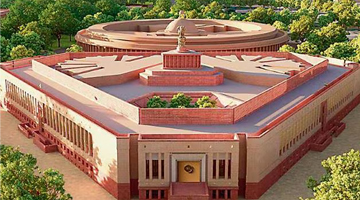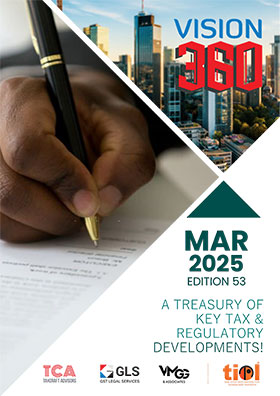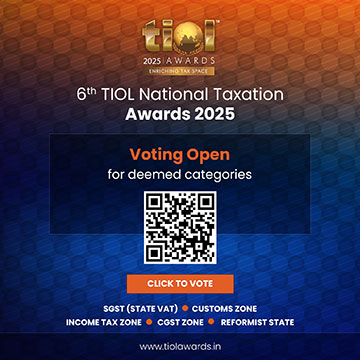Distributed Dilemma - Input Service Credit & Distribution
DECEMBER 22, 2015
By Lukose Joseph (CA) & Anil P Nair (CA)
 CENVAT Credit Rules allow distribution of CENVAT Credit between various manufacturing units and service providing offices where the input service is related to all or any of those units or offices.
CENVAT Credit Rules allow distribution of CENVAT Credit between various manufacturing units and service providing offices where the input service is related to all or any of those units or offices.
Rule 2(m) of the CCR, 2004 defines "input service distributor" thus -
"Input service distributor" means an office of the manufacturer or producer of final products or provider of output service, which receives invoices issued under rule 4A of the Service Tax Rules, 1994 towards purchases of input services and issues invoice, bill or, as the case may be, challan for the purposes of distributing the credit of service tax paid on the said services to such manufacturer or producer or provider, as the case may be;
Rule 7 gives the manner of distribution of credit by input service distributor.
These rules which were so generous and simple up to 01.04.2012 read as follows:Input credit shall not exceed the amount of service tax paid there on[clause (a)] and credit of service used in a unit exclusively engaged in manufacture of exempted goods or providing exempted services shall not be distributed [clause (b)].
These rules gave taxpayer an undue advantage in that he could transfer the credit from non-taxable unit to taxable unit. That is, if a service is used both for taxable and non-taxable units, credit could be availed entirely by the taxable unit. Tax Department decided to deal with this loophole.
The manner of distributing credit was changed by amending clause (b) and adding two more clauses viz. (c) and (d) as follows: [Notification No. 18/2012 dated 17.3.2012 applicable from 01.4.2012].
(b) Credit of service tax attributable to service used by one or more units exclusively engaged in manufacture of exempted goods or providing of exempted services shall not be distributed.
(c)Credit of service tax attributable to service used wholly in a unit shall be distributed only to that unit; and
(d) Credit of service tax attributable to service used in more than one unit shall be distributed pro rata on the basis of the turnover during the relevant period of the concerned unit to the sum total of the turnover of all the units to which the service relates during the same period.
The amendment appeared reasonable and prevented the transfer of credit from non-taxable unit to taxable unit. The distribution shall be on the basis of turnover of the units which used such service.
When the rule was thus settled, it was further amended in 2014 and the new clauses (c) & (d) read as below:
[Notification No 05/2014 -CE-(N.T) Dated 24.02.2014 applicable from 01.04.2014]
(c)Credit of service tax attributable to service used wholly by a unit shall be distributed only to that unit; and
(d) Credit of service tax attributable to service used by more than one unit shall be distributed pro rata on the basis of the turnover of such units during the relevant period to the total turnover of all its units, which are operational in the current year, during the said relevant period .
The amendment in clause (c) was alright but the amendment to clause (d) here, openeda Pandora's Box and many asked for clarification of the substituted terms ' such units' in place of ' concerned units'.
The Department then came out with a circular, but which revealed the wily intention to deny due credit to taxpayers.
Circular 178/4/2014-ST, dated11.07.2014 was issued clarifying the distribution in such a way that input service credit is given to all units in the ratio of their turnover of the previous year. We are also given an illustration in the Circular. Aprovision which was too much taxpayer friendly up to 01.04.2012 and was balanced up to 01.04.2014 is now turned hostile. New clause and its clarification thereon are unreasonable as it distributes credit to all the (such) units while earlier credit was distributed to the concerned units considering whether the service is related.
The dilemma arises when service tax credit is to be distributed between units, but some of them do not actually use the said service.
Let us delve on the given illustration and extrapolate it to certain different circumstances.
Say,Mr. X, a tax payer having Input Service Distribution office has 4 units, A, B, C, & D.
'A' manufactures excisable goods, 'B' taxable services, 'C' exclusively provides exempted goods and 'D' exclusively provides exempted services.
Mr. X has Rs 12,000/- in service tax credit pertaining to more than one unit. See our illustration,below.
Part I adapts the given illustration in Circular to these changed situations. Part II is when a single unit uses the input service. Part III gives the circumstances when the exempted units do not utilise such input service and how the distribution is carried out according to the illustration given in the Circular.
Illustration:
| Input Service Tax Credit Available to Mr. X |
|
Particulars
|
Units
|
|
A
|
B
|
C
|
D
|
Total
|
| |
Units Provide ??
|
Excisable Goods
|
Taxable Services
|
Exempted Goods
|
Exempted Services
|
| Part I |
Service Used in Units
|
Yes
|
Yes
|
Yes
|
Yes
|
|
| Turnover in the previous year in Rs |
2,500,000
|
3,000,000
|
1,500,000
|
3,000,000
|
10,000,000
|
| Distribution according to given illustration Cenvat Credit Rs. |
3,000
|
3,600
|
1,800
|
3,600
|
12,000
|
| 12,000 |
| Part II |
Service Used in Units |
Yes
|
No
|
No
|
No
|
|
| Distribution according to given illustration Cenvat Credit Rs. |
12,000
|
0
|
0
|
0
|
12,000
|
| 12,000 |
| Part III |
Service Used in Units |
Yes
|
Yes
|
No
|
No
|
|
| Distribution according to given illustration Cenvat Credit Rs. |
3,000
|
3,600
|
1,800
|
3,600
|
12,000
|
| 12,000 |
| Logical Credit |
5,455
|
6,545
|
Cannot Utilise Credit as above
|
Cannot Utilise Credit as above
|
12,000
|
| Lost Credit |
2,455
|
2,945
|
5,400
|
Conclusion:
It is evident that, even when the exempted units do not use the input service, the distribution happens and thus the units which use the service are denied of the input credit rightfully due to them, and exempted units in turn get credit for input service which they have no use for.
If we consider a case of units with exempted goods and services having higher turnover than those taxable, the disparity and the lost credit will be huge.
Erstwhile clause gave the tax payer undue advantage where as the new revenue friendly illustration denied his due share.
The above being an anomaly, we hope the Department will consider and make the condition for usage of services a pre-requisite for distribution of services. Even otherwise, it is better to give the assessee the freedom to distribute according to law than the authorities giving straight jacket explanations for such distributions. Rules bereft of logical explanations will help only Tax Administrators to make out cases on flimsy grounds and increase litigation and related costs.
|
( DISCLAIMER : The views expressed are strictly of the author and Taxindiaonline.com doesn't necessarily subscribe to the same. Taxindiaonline.com Pvt. Ltd. is not responsible or liable for any loss or damage caused to anyone due to any interpretation, error, omission in the articles being hosted on the sites)
|









 CENVAT Credit Rules allow distribution of CENVAT Credit between various manufacturing units and service providing offices where the input service is related to all or any of those units or offices.
CENVAT Credit Rules allow distribution of CENVAT Credit between various manufacturing units and service providing offices where the input service is related to all or any of those units or offices. 





